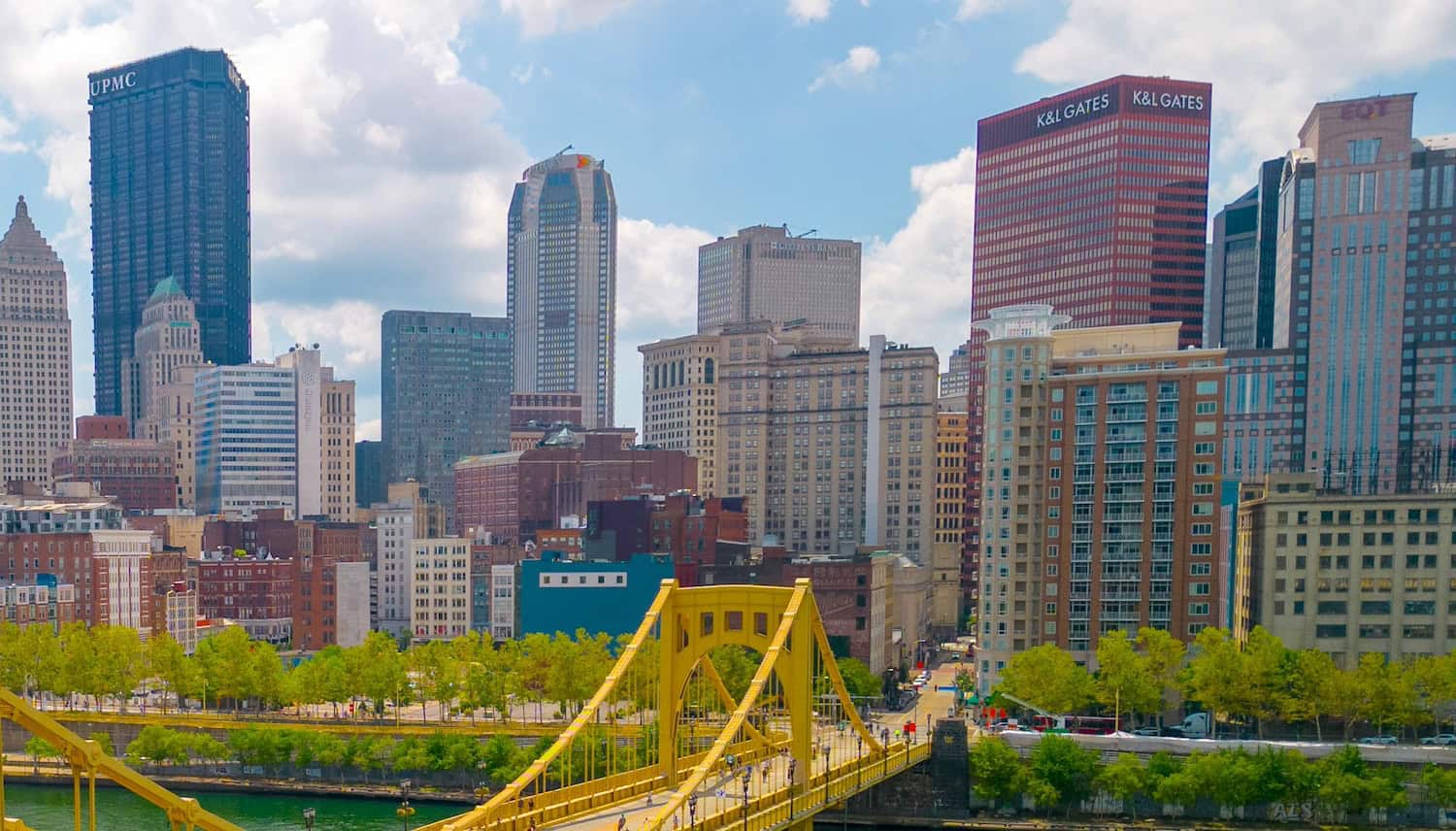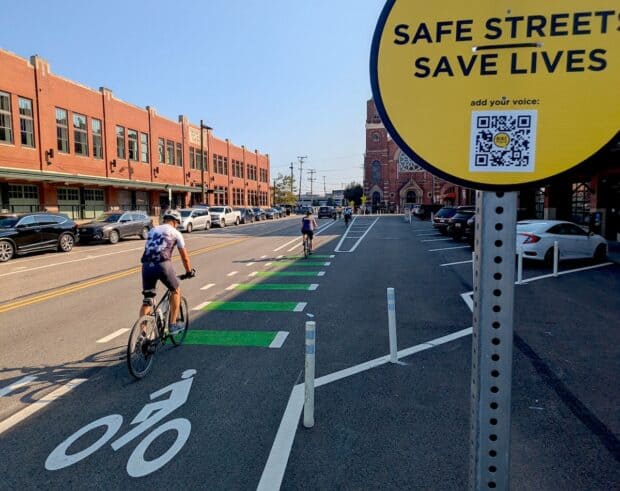
How the 15-Minute City Can Unlock Pittsburgh’s Potential for Better Access, Equity and Safety
Imagine living in a place where everything you and your family needs is within a safe 15-minute walk or bike ride. Your daily life revolves around vibrant streets where you can go to the grocery store, take your kid to school (or better yet, they can take themselves), and visit shops, cultural attractions and cafes, all without getting into a car. This is the “15-minute city,” coined by Professor Carlos Moreno, and Pittsburgh has the chance to become one as we embark on our first-ever comprehensive city plan.
Pittsburgh, with its 90 neighborhoods, many of which were shaped pre-automobile, has the bones of such a place. But for the past 70 years, Pittsburgh’s neighborhoods have been shaped by car-centric planning that separates housing from businesses, schools, and other essential things that people need to conveniently access. While Pittsburgh avoided the worst of suburban sprawl relative to other American cities, we still suffer from the legacy of misguided urban planning projects and effectively segregated zoning. The result? Too many neighborhoods where it’s too difficult to live without a car because the things we need to access are often too far away and the streets leading there are often too dangerous to attract people of all ages and abilities to walk and bike them.
This outdated car-centric neighborhood design is particularly damaging to the nearly 25% of Pittsburgh households without access to a vehicle. For them, our current urban layout isn’t just inconvenient – it’s a barrier to accessing jobs, healthcare, education, and other vital services and cultural experiences. According to AAA, the average yearly cost of owning a new car is over $12,000. Car dependency isn’t just wasting our time, making our streets more dangerous, our air dirtier, and our neighborhoods noisier, it’s breaking household budgets as well.
How do we achieve this vision?
Updating Pittsburgh’s zoning code to encourage denser and more diverse neighborhoods is crucial. We must incentivize more “missing middle” housing like duplexes, triplexes, and smaller multi-unit buildings to have more affordable homes in our residential streets and neighborhoods. We should allow families to add backyard cottages to their properties. We must make it easier to build dense, mixed use developments near transit.
It seems obvious, but allowing, for example, corner stores and cafes throughout our neighborhoods and not only in business districts would also result in fewer car trips taken. This practice used to be much more common in Pittsburgh and you can see evidence in neighborhoods like East Liberty and Lawrenceville. But businesses like this thrive when more people are able to live near them.
Some communities harmed by disruptive planning projects that excluded community voices in the past may worry about gentrification and displacement. To address these concerns head-on, our 15-minute city plan must include ample housing in general and affordable housing specifically. We can look to cities like Vienna, where government-subsidized housing makes up about 25% of the housing stock and houses approximately 60% of its people, ensuring walkable, amenity-rich neighborhoods remain accessible to all. Sure, America ain’t Austria, but we can borrow what works and adapt it to our context and what works in our market and available funding mechanisms.
But zoning, of course, is just one piece of the puzzle. Our streets must become places for people first, designed to keep all of us safe. They should be attractive public spaces – not dangerous and unpleasant thoroughfares pushing noisy, fast-moving vehicles through our neighborhoods. Pittsburghers of all ages and abilities deserve to access nearby neighborhood amenities by foot, bike, wheelchair, or transit.
We need to prioritize street space for people over cars whenever possible, which means ditching costly parking mandates that consume precious land, create ugly streetscapes, and encourage unnecessary driving. And at approximately $30,000 in additional construction costs per space, parking requirements drive up costs for businesses and residents alike.
While Pittsburgh has made huge strides with Complete Streets and Vision Zero policies, our comprehensive plan is an opportunity to fully integrate sustainable, human-scale mobility into the city’s DNA. The city plan we create today can dramatically enhance our quality of life for decades to come, and this is a time to be bold.

The path forward is clear, but we need your help to make it a reality.
Attend city planning meetings, write to your council members and voice support for these ideas, and join local advocacy and community groups like BikePGH. Together, we can build a more affordable, sustainable, and livable Pittsburgh for all.
Special thanks to Joe Lampe from Resilient Future Consulting for his research that informed this article.
Update: As of August 28, 2024, Mayor Gainey’s office announced that it will be publicly announcing a package of zoning reforms on September 5th that, among other things, include a few of the things I am advocating for specifically in this piece including:
- Allowing Accessory Dwelling Units (backyard cottages)
- Eliminating parking minimums
- Permitting Transit Oriented Development (at South Hills Junction and Herron Street)
